As a child I remember my grandmother ask after the weather forecast. London is pretty unpredictable but we did have some scorching summers when I was little. There were no iPhone apps so I would show her the newspaper. She’d nod and then get to work making poppadums. My job was to carefully go and lay them out on the cotton saris in the garden to dry. I don’t remember there being any health benefits. It was just something nice to eat and drying it out in the sun was obviously far less expensive than using an oven. My Italian friend recalls similar memories with tomatoes drying in the sun during her summer holidays in Puglia. Again, more for flavour and crop preservation than health.
Nowadays articles of dehydrating focus on health benefits. Dehydrators gently preserve the nutrients and flavours in food by low temperature drying. Because ingredients are dehydrated without cooking they leave enzymes and vitamins intact and the flavour also becomes more concentrated and intense.
I was sent a dehydrator to try from Froothie. I’ve been playing around making different things and here are a few questions you may find useful if you’re considering buying one.
How big is it?
I have a big kitchen and a fair amount of shelf space. I was rather surprised when the delivery came. The box just about fit through my front door. At first I thought it was going to be packaging but the machine lifted pretty much straight out. I have the six tray version but there is a ten tray option too. It’s L 38.5 cm x H 31cm x D 49 cm – that’s about the size of a small microwave, just under two wine bottles high. So yes, it’s not a space saving design so you need to think about that. As I’ve been using it everyday I’ve actually emptied a cupboard so it can sit neatly in there. I leave the door open while it’s on. What I also like is that you can open an individual tray while it’s on to have a look at how things are getting on.
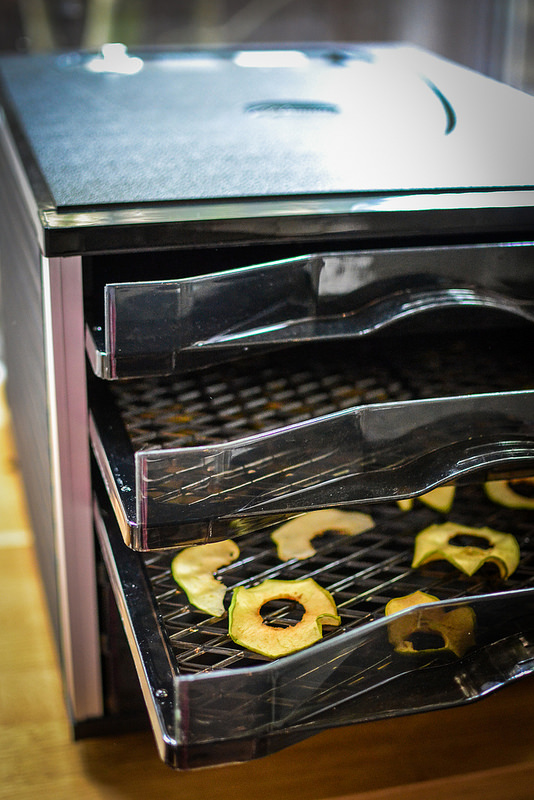
How much noise does it make?
It’s actually very quiet. It sounds like a gentle extractor fan so when you’re cooking other things you can’t really notice it.
How much does it cost to run?
One of the things that concerned me when I was flicking through recipes was the length of time things take to dehydrate. Hours and hours! The Froothie Optimum P200 Dehydrator has a 40 hour timer. That’s pretty long! So was this going to cost me loads in electricity bills and would that outweigh just buying sundried tomatoes vs making them? To work it out, you just need to know three things:
- The wattage of the dehydrator
- The hours needed to dehydrate
- The cost of electricity
Then you need to apply this formula
- Wattage × Hours needed / 1000 = Kilowatt per hour (kWh) consumption
- kWh x cost per kWh
So, for example, according to UKPower in the UK electricity costs around 10p per kWh and the 6 tray dehydrator I have been using is 630 watts. Here’s how to work out what it costs per hour.
- 630 watts x 1 hour / 1000 = 0.63 kWh
- 0.63kWh x 10p = £0.063p
So on average making a batch of apple rings from a bag of apples from my local market is going to cost me £1.30p – £1 for the 10 apples and then 0.063p per hour for 5 hours. That’s waaaay cheaper than buying them!
How much does it cost to buy?
The model I have is currently £199 and comes with a 3 year warranty. It also comes with 2 plastic mats and 2 mesh mats. You can order more of the meshes but to be honest greaseproof paper works just as well.
What can you make?
The more I researched the more I got excited about having this machine. There is of course the easy stuff like fruit leather. Just puree the fruit of your choice, spread onto the mat that comes with the machine and dehydrate at 60C for about 6 to 10 hours depending on the thickness of the fruit.
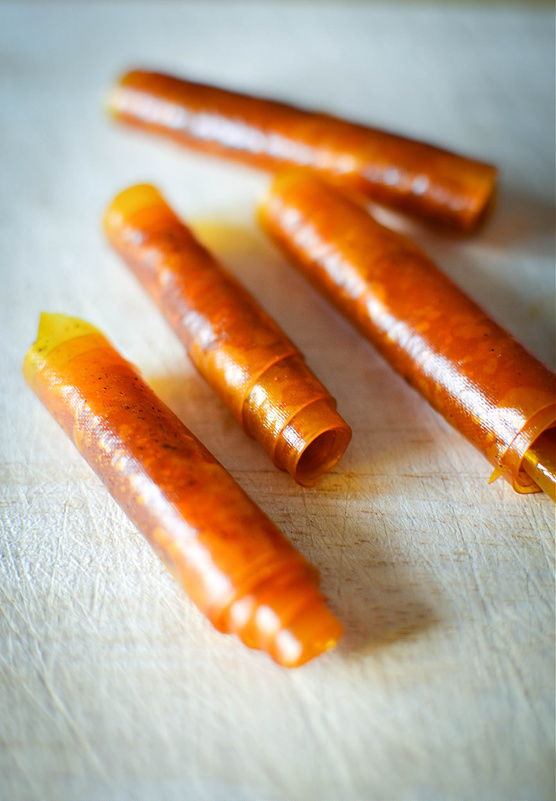
Dried fruit is very easy to make. Adjust the timing based on how thick you want the slices to be. I’ve shown apples here but we’ve also made pears, plums, peaches, strawberries and mangoes. Just core and slice the fruit a few millimetres thick, sprinkle with your choice of spice or not, lay out onto the racks and dehydrate at 60C for 4-6 hours.
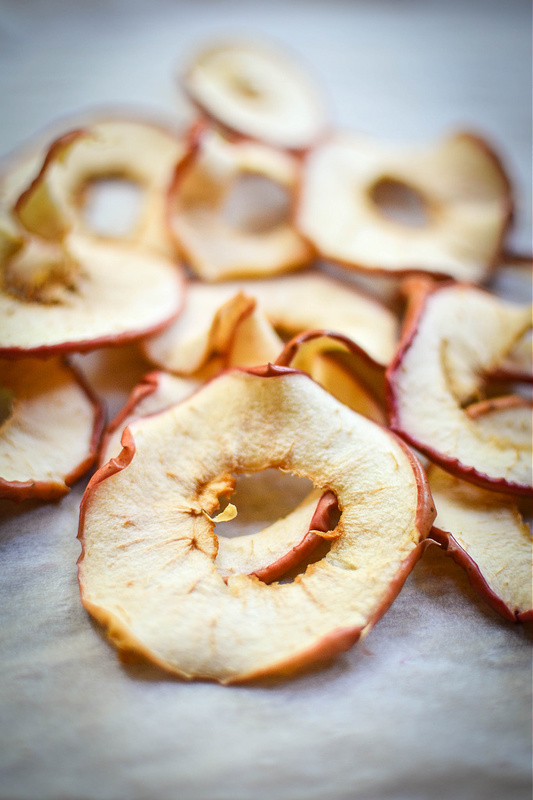
The same technique works well for vegetables. I had some radishes that had gone a bit wrinkly so I sliced them in 1mm slices and then dried them for 3 hours at 60C. They turned into lovely crisps that I used to top salads and open sandwiches.
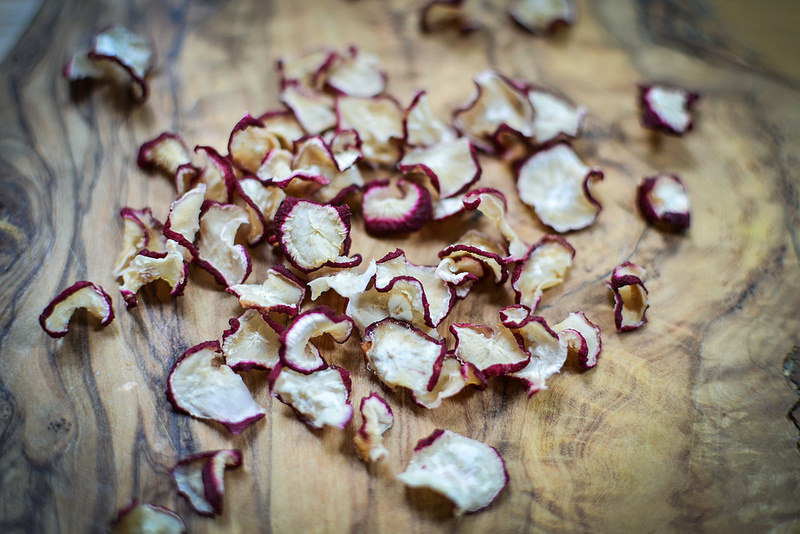
I’ve also made some flavoured dust like this Wild Garlic Dust. It’s really good for topping soups and dhals. You could use herbs or other edible leaves like nettles or hedge garlic. Just lay the leaves out on the trays, dry at 40C for 6 hours and then blitz in a spice grinder or pestle and mortar.
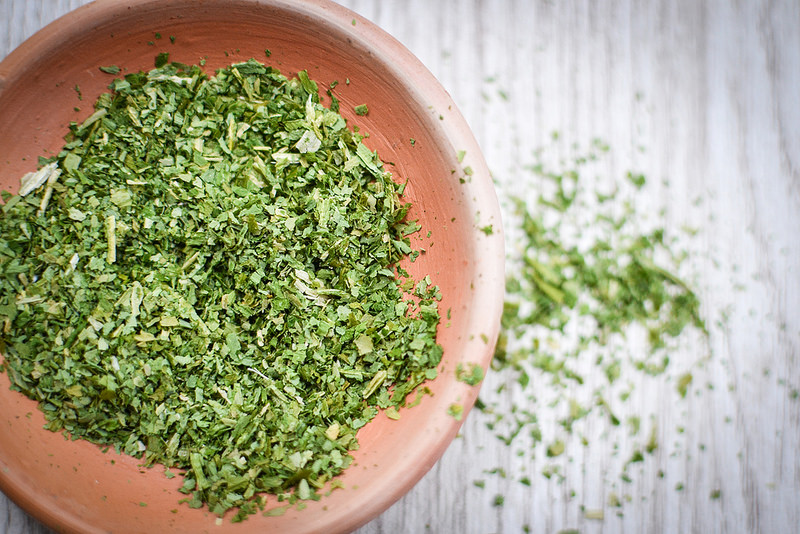
The same technique works for citrus peel. Just dry bits of peel for 10-12 hours at 60C and blitz. It’s really lovely sprinkled onto porridge, cakes or mousses. Mix it with some edible glitter and you’ve got a pretty garnish that’s always handy in the cupboard.
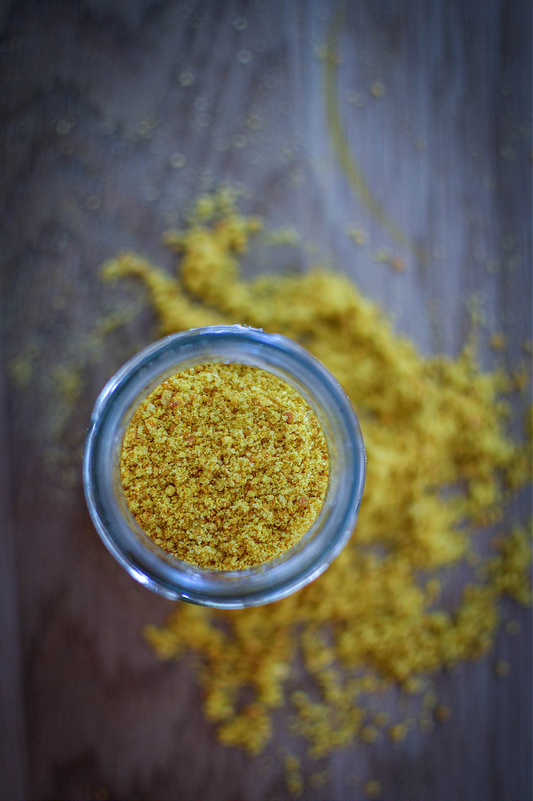
In summary
So I hope that’s given you a flavour of what dehydrators can do. I’m going to keep mine and I’ll be sharing some recipes in the coming months and posting pictures of my experiments on my instagram feed.
Thanks to Froothie for sending me the dehydrator. I really didn’t think I’d like it but I’m becoming addicted! You can buy it on Amazon or via Froothie’s website. I get a little cashback as the link below is an affiliate link
Here are some other reviews you might like to read before deciding if you want to invest in this machine.
